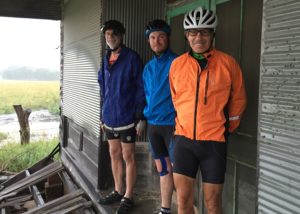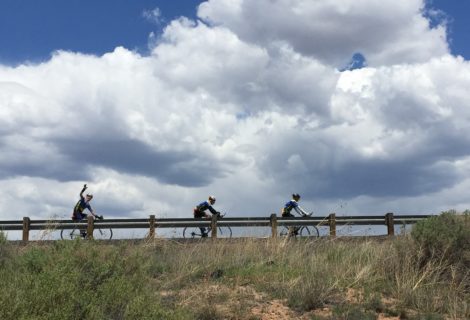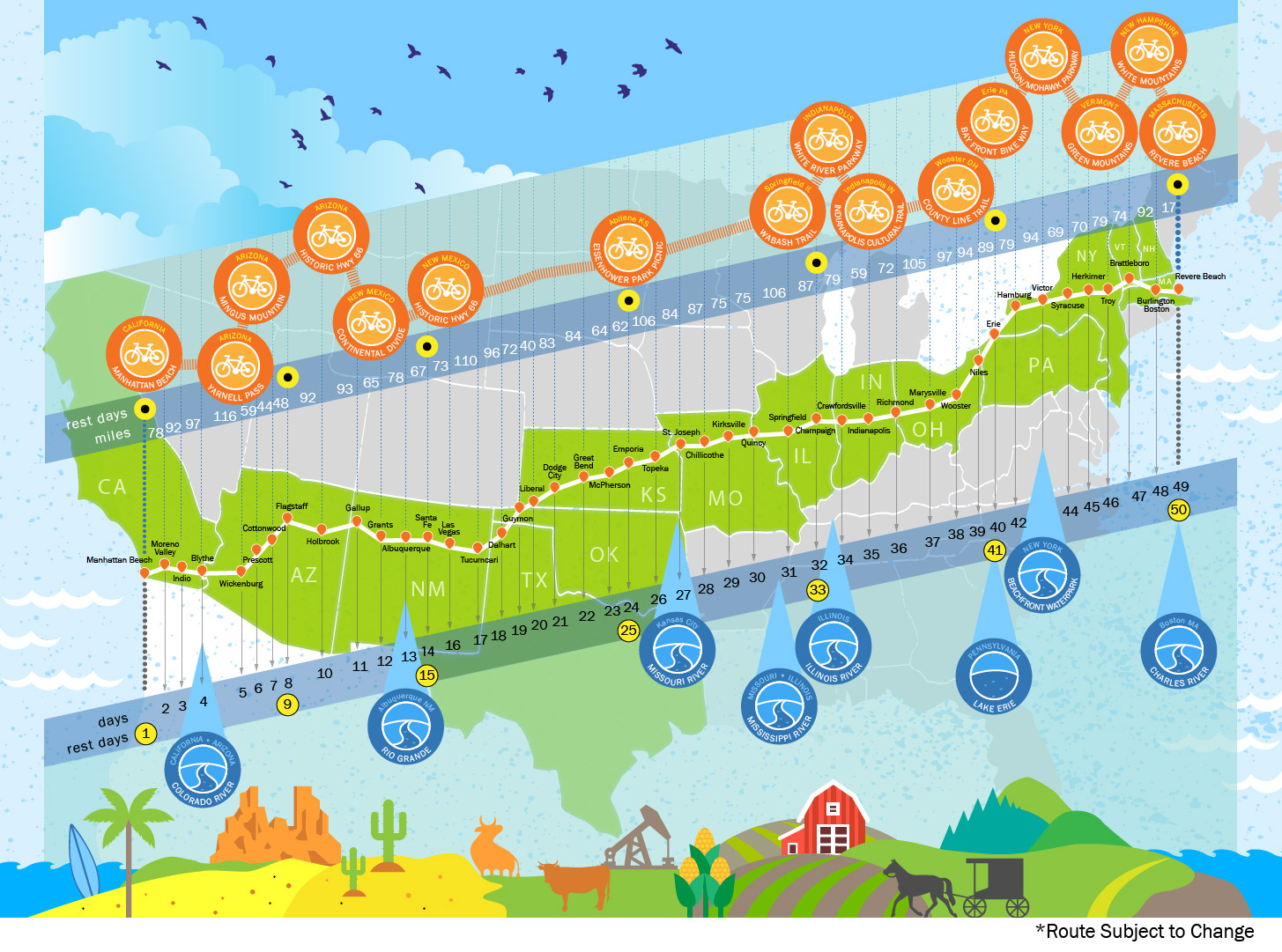How to Ride in the Rain
How to Ride in the Rain
When you ride cross country, sooner or later you will ride in the rain and YOU WILL NOT MELT. The article below written by Susan Otcenas, found on teamestrogen.com, provides some great rain-day advice. Keep in mind, winter gear would not be necessary on a summertime cross country ride, but it’s great to have while you are training.

Howie, Mark and Steve take shelter outside Topeka, KS and wait for the storm to pass.
5 TIPS FOR RIDING IN THE RAIN + 10 WET WEATHER GEAR RECOMMENDATIONS
LET IT RAIN!
by Susan Otcenas
Here in Portland, we’ve had our one snowfall for the season but we have several months of rain ahead of us before our perfect summer weather arrives. With that in mind, we thought we’d offer up a few simple tips to help you have a BLAST riding in the rain!
- Brake Early. Your stopping distance while riding in wet weather will be greatly increased (unless you have a bike with disc brakes). If you are in a situation where you might need to come to a sudden stop, lightly pulse your brakes to “squeegee” off the water on the rims in advance of actually needing to brake hard.
- Light It Up. Even during the daytime, a flashing red tailight and a front headlight can help other road users see you better. You should also wear brightly colored clothing with plenty of reflectivity to enhance your visibility.
- Avoid Puddles, Paint, Plates and Plant Debris. Puddles can be surprisingly deep and can hide potholes, rocks and even roadside curbs. The white fog line and other painted features on the road can be slippery when wet and should be avoided. Use caution when rolling over manhole covers and metal plates in the roadway. And a final word of warning: leave the leaves alone! Wet leaves and other debris on the side of the road can cause you to lose control, especially when turning or going around curves.
- Stay Alert. You aren’t the only one who can’t see as well when it is dark and rainy. Assume that motorists do not see you and exercise even more caution than usual while playing in traffic.
- Take Your Time. Riding slower gives you more time to detect and safely react to roadway hazards.
“THERE’S NO SUCH THING AS BAD WEATHER, ONLY BAD CLOTHING.”



